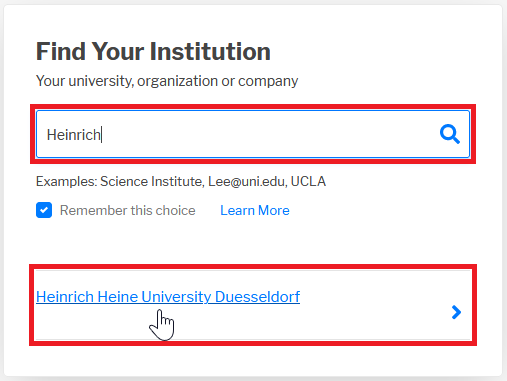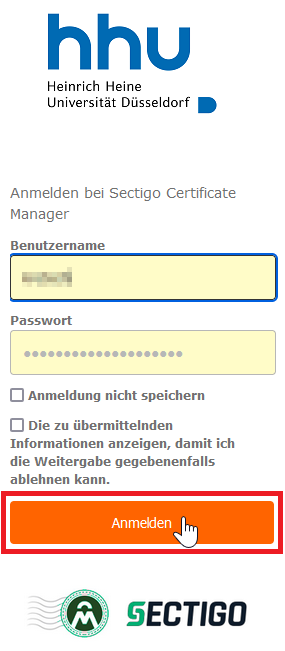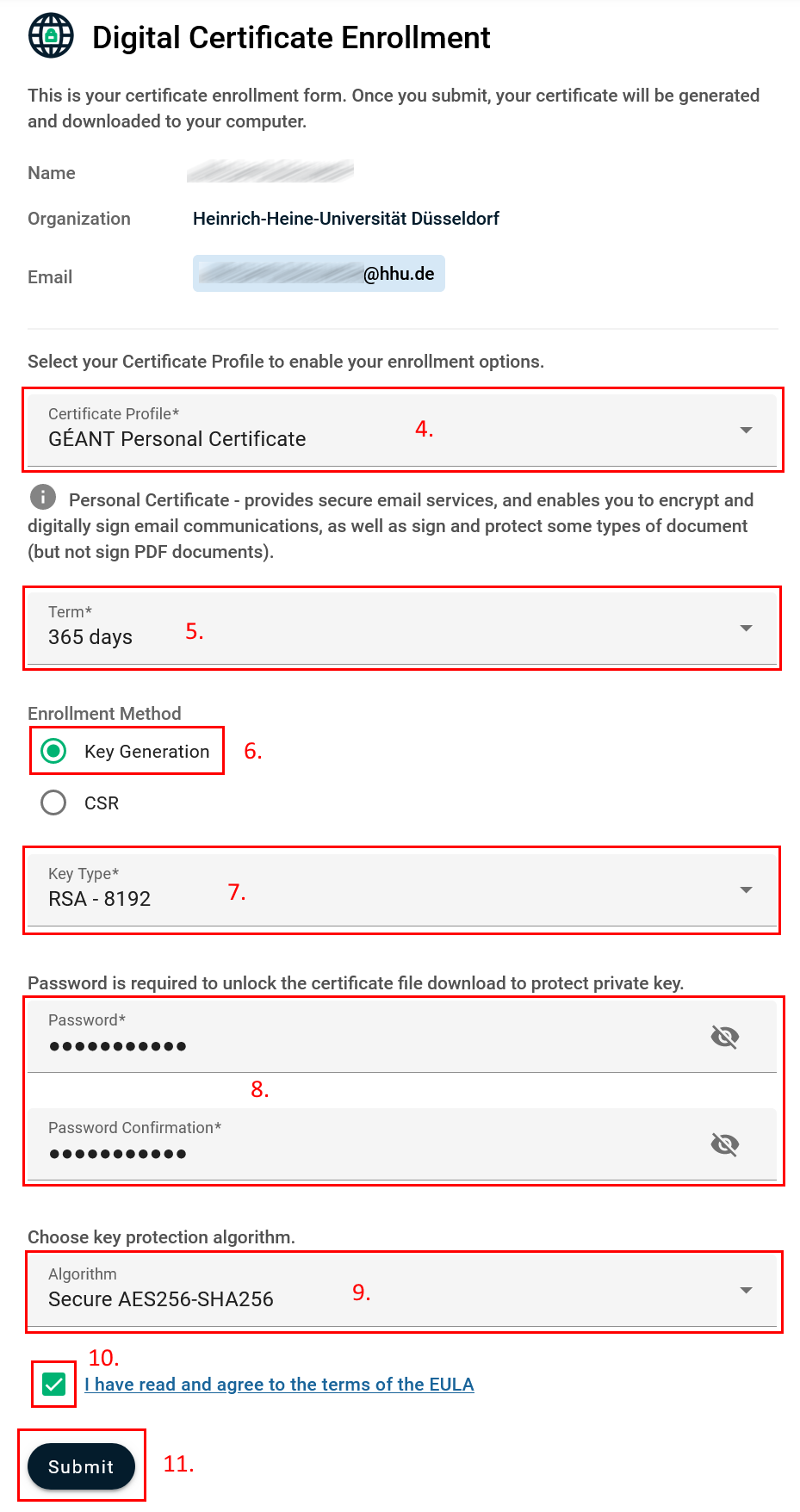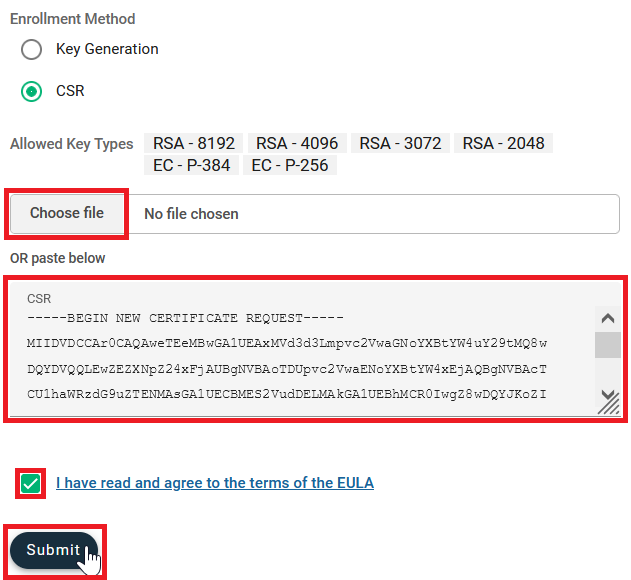If you want to sign or encode your personal e-mails or your PDFs, you need a User Certificate.
- The certificate is valid for one e-mail address only and is edited for your main e-mail address at the HHU.
- If the e-mail addresses of the sender and of the certificate are different, the recipient gets a warning notice. This should be avoided.
- You can own 5 certificates at the same time. As soon as you create a sixth certificate, the oldest one will automatically be deleted.
Overview
You don’t know your main e-mail address?
Log in at the IDM (idm.hhu.de) and check your main mail address at "My Profile" → "EMail".
To change your main e-mail address, follow this instruction.
Your Certificate expires?
There’s no possibility to prolong the certificate. You have to apply for a new one (before the old one expires). Further information you find lower on this page.
Instruction: Apply for a User Certificate
Click on the following Link to get on the Sectigo page: Applying for User Certificate
Choose the HHU by inserting "HHU", "Heinrich" or similar into the search box. By clicking on → „Heinrich Heine University Duesseldorf“you are led further to the Login window.
In the Login window, you put in your university ID as user name and the according password. Then click on → „Anmelden“.
Now the attributes that are delivered to Sectigo are listed:
- Your name
- Mail address
- Institution (here: HHU Düsseldorf).
These Informations are needed to assign the certificate to your person and e-mail address. By clicking on → „Accept“ you are directed further.
Now there is shown the name the certificate is issued for, the institution you belong to, and the e-mail address the certificate is valid for. Choose now the Certificate Profile. For the distribution of signed and encoded e-mails and the signing of PDFs the → „Géant Personal Certificate“.
(Notice: "... (but not sign PDF documents)" → For Adobe Reader there have to be made additional settings.
As → „Term“you set the Validity periodof the certificate: 1, 2 or 3 years ("365 days", "730 days", "1095 days").
As Enrollment Method you can decide between generating a new key → „Key Generation“oruploading an already existing Request → „CSR“*.
In most cases you should choose "Key Generation".
Alternatively you may create a Request / CSR: Create CSR
After setting this information, the whole remaining form can be seen.
Key Generation:
Under → „Key Type“ you may choose between RSAand EC-Pin different Key lengths. We recommend: RSA-4096
Notice:
Certificates with the ECC Key Types P-384 and P-256 can only be used for Signature and Authentication, but not for encryption.
Choose a Password to protect the Certificateand to open it after Downloading it. Confirm your Password.
Choose the Protection Algorithm: "Secure AES256-SHA256", the most modern secure one.
Attention: Not all the programs support this standard, there may be issues like: „Das eingegebene Kennwort ist falsch.“, „Fehler im zugrunde liegenden Sicherheitssystem. Ungültigen Anbietertyp angegeben.“ In this case please set up a new certificate with the algorithm: "Compatible TripleDES-SHA1". More Information you find here: https://doku.tid.dfn.de/de:dfnpki:tcsfaq#auswahl_des_verschluesselungsalgorithmus_fuer_p12-dateien_pkcs_12
To accept the EULA (End User License Agreement), set the according ☑ mark.
Click on → „Submit“. After that you get the notice "Your certificate has been successfully generated" and the certificate (named certs.p12) for Download. Store the Certificate in a file where you easily find it again.
*Alternative: CSR upload
- Upload your previosly generated Request (→„Choose File“) or copy it by Copy & Paste into the input box (→ „paste below“). Now your informations are complete.
- Set the ☑ mark to accept the EULA (End User License Agreement).
- Click on → „Submit“. After that you get the notice "Your certificate has been successfully generated" and the certificate (named certs.p12) for Download. Store the Certificate in a file where you easily find it again. You don’t receive the Certificate additional per Mail.
Please keep older Certificates stored because you might need them to open older files.



